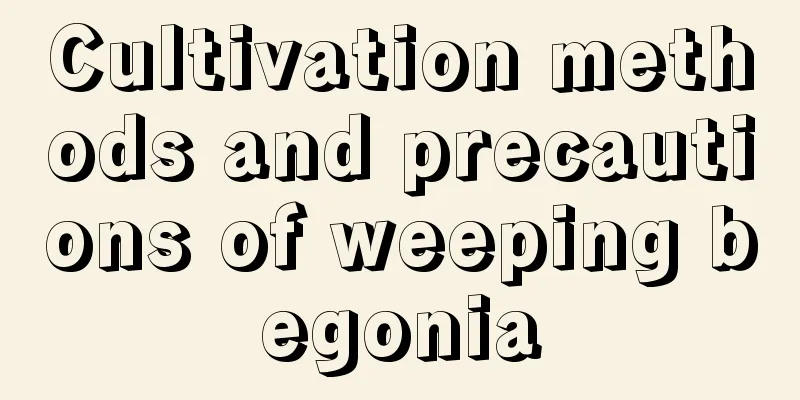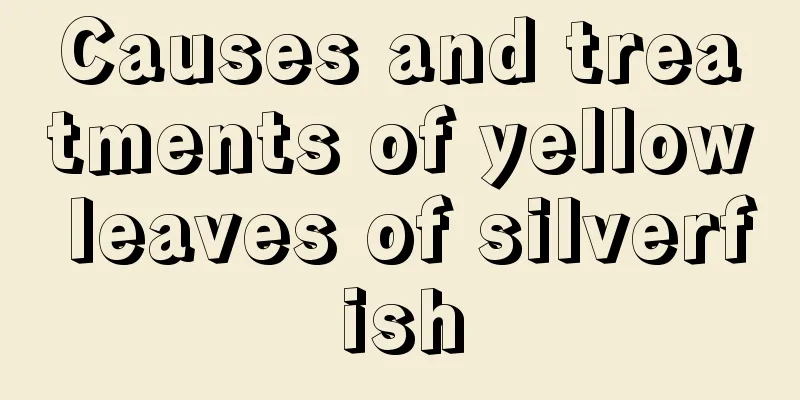What are the cultivation methods and precautions of ivy?

Ivy cultivation methodIvy likes warm, humid, semi-sunny environment. The suitable growth temperature is between 16-27 degrees, 21-27 degrees from March to September, and 16-21 degrees from September to March of the following year. It can grow under high temperature conditions above 30 degrees. It is not cold-resistant and the winter temperature needs to be above 5 degrees. Ivy can grow in full sun, half sun or semi-shade environment, but insufficient sunlight will affect the color of the leaves and normal growth. The soil should be fertile, loose and well-drained sandy loam, which can be mixed with peat soil, leaf mold and coarse sand. Watering methodIvy likes a humid environment. Water it frequently in summer to keep the soil moist. Water it in time before it dries out. Also spray water around the plant. Water it twice a week in spring and autumn, and control the water appropriately in winter. Fertilization methodDuring the period of vigorous growth of ivy, its nutrient needs must be met. Therefore, some compound fertilizer or cake fertilizer water can be applied at intervals of 15-20 days from March to September. Pay attention to applying thin fertilizers frequently, and do not apply concentrated fertilizers or raw fertilizers. Pruning methodsIvy is prone to sprouting long branches, so they need to be pruned to promote the growth of side branches and improve the plant's ornamental value. Young plants should be thinned out and lightly pruned to reduce nutrient loss. Ivy cultivation precautionsIvy cannot tolerate strong light exposure and needs to be shaded in the summer to prevent exposure to the scorching sun. It is suitable for maintenance in bright scattered light. In winter, the light is soft and does not require shading. It can grow well as long as it receives more than 4 hours of direct sunlight a day. |
<<: Is sweet potato a fruit or a vegetable?
>>: How to propagate Begonia? Propagation time and method diagram
Recommend
What flowers are suitable for growing in Kunming? What are the city flowers and trees?
1. Climate characteristics of Kunming Kunming is ...
Reasons and solutions for osmanthus not blooming
When osmanthus flowers bloom, their fragrance spr...
How to plant asparagus seeds
1. Seed collection Every autumn, from September t...
How to propagate oleander
Growth habits of oleander Oleander likes to grow ...
What to do if the tiger tail orchid has roots but does not sprout (Why does the cutting tiger tail orchid not grow)
Why does the tiger tail orchid take root quickly ...
Cultivation methods and precautions of succulent Oplina
The succulent plant Oplina is very easy to grow. ...
How to grow ivy strong
1. Suitable soil If you want the plants to grow s...
How much is the profit per acre of pecans? How much is the income per acre of pecans?
Pecans are common imported nuts, originally grown...
How to cultivate Bauhinia
1. Maintenance methods 1. Temperature: Bauhinia h...
When is the best time to plant pansy seeds?
Pansy seed planting time Pansy is a biennial or p...
The difference between Yayuezhiwu and Jinzhiyuye, which one is better?
1. The difference between Yayue Dance and Jinzhiy...
How big is the world's largest mushroom and what does it look like?
1. How big is the world's largest mushroom? T...
How to prune chrysanthemum
When to prune chrysanthemums It is generally more...
Common diseases and pests of Podocarpus and their control methods
Leaf spot Symptoms: There are oval and long light...
Are you still growing "common spider plants"? These 4 species of spider plants are really special, especially the second one
Purple spider plant This spider plant looks just ...









